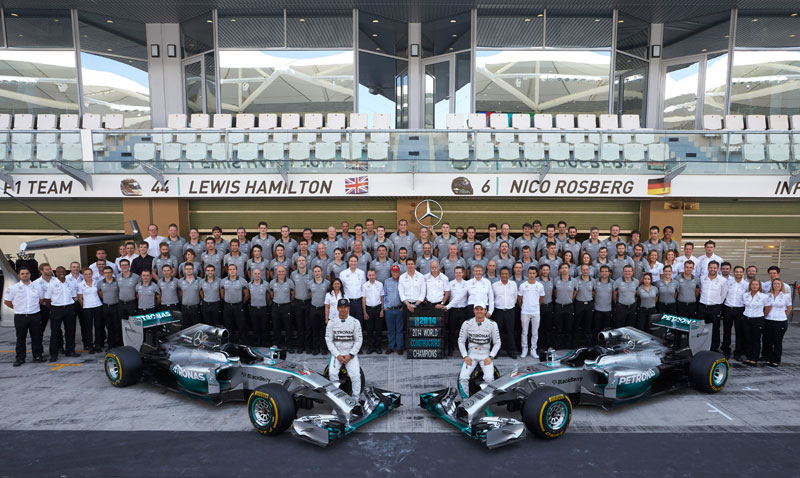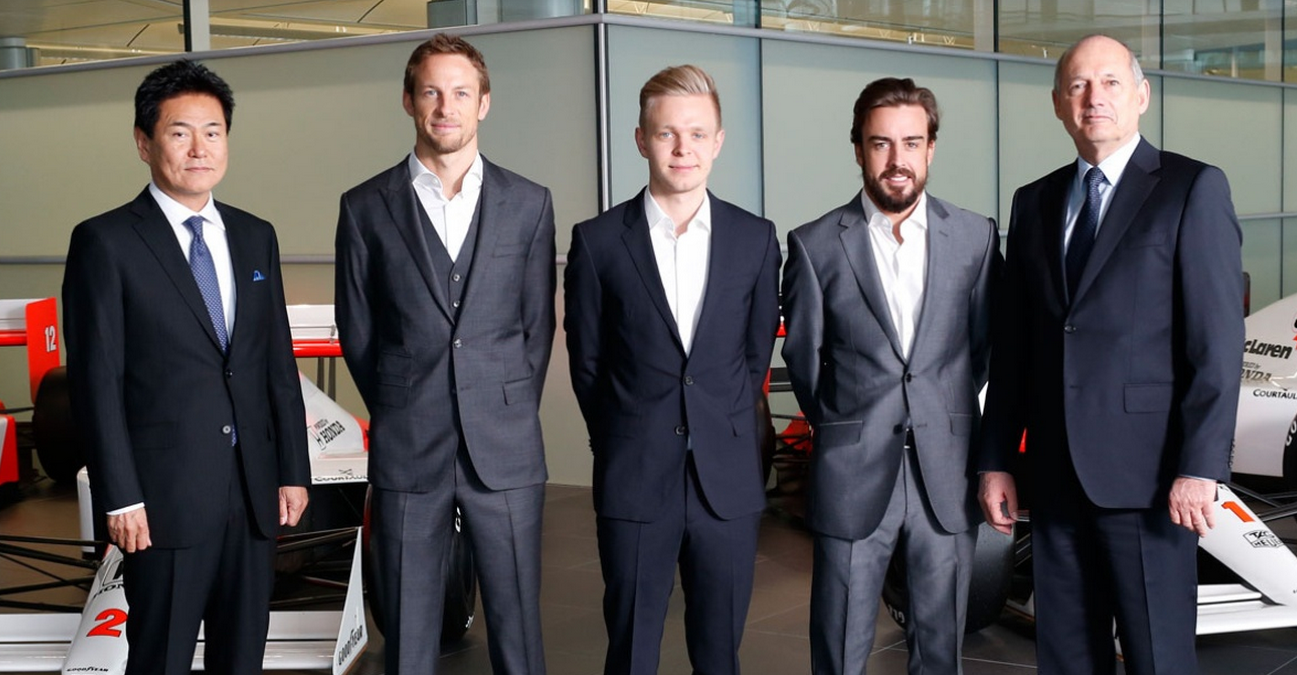
Featured This Week: 2015 Safety / Medical Car




As the F1 circus prepares to head off to Melbourne it’s worth recalling that this year marks the 30th anniversary of the first Australian GP. There are two big differences between now and then, of course. For the first 11 years of its life the race took place not in Melbourne, but in Adelaide, and rather than open the season, it was the final round.
While I have nothing against the current venue, I suspect that like me many F1 insiders look back on Adelaide with fond memories. A lot smaller than Melbourne, the city was much easier to get around, and on a walk down the main drag one was always likely to bump into a driver or two. If you had a little spare time you could venture into the countryside and explore the much-feted wineries. For some reason the McLaren Vale region always sounded appealing!
Melbourne has a lot going for it, but there are multiple focal points for hotels, nightlife, eating and shopping, and the whole place is much more spread out. The Adelaide race seemed to have a bigger impact locally, perhaps reflecting the fact that historically there’s always so much going in Melbourne, what with the open tennis and the famous horse race that bears the city’s name. The arrival of the Grand Prix helped to put sleepy Adelaide on the map internationally, which is of course exactly why the South Australian government chose to back it. They even had the full support of then Prime Minister Bob Hawke.
Back in 1985 ‘flyaways’ were relatively uncommon. At the time we had Brazil at the start of the year, Montreal and Detroit early in the summer, and then South Africa at the end. Adelaide was slotted in after Kyalami to be the season closer, a position it held throughout its life.
Many of us were a little sceptical when details of the temporary street circuit were first revealed – after all Detroit, Las Vegas and Dallas had all been underwhelming as F1 venues, even if the first named usually provided some excitement. And there always seemed to be problems with inaugural races, as there was no longer a requirement for new venues to run a ‘dress rehearsal’ event first to iron out any bugs. At the end of a long and tiring season not everyone was keen to jump on a plane for what seemed likely to be a challenging trip down-under.
The pessimists were proved to be wrong in their predictions. Not only was the Victoria Park venue complete and ready for action, it turned out to be well above average for a street venue, with some challenging corners. The pit and paddock facilities were superb, and throughout the weekend everything ran like clockwork, the sun shone, and it was a thoroughly pleasant experience. The drivers had no complaints.
“As a facility, it has got to be the best street circuit we’ve ever seen,” noted the usually cynical Keke Rosberg. “This is a natural environment for an F1 race.” Asked later whether he was just in PR mode he added: “Take it from me, the F1 fraternity is the rudest in the world. If we thought it was bad, don’t worry, we would have said so. But we think it’s the best…
It was perhaps appropriate that the irrepressible Finn – in his last start for Williams before joining McLaren – went on to win the race, showing once more that he was a master of the street track. However, it was also a big weekend for his future team. Alan Prost may have clinched the drivers’ title at Brands Hatch two races earlier, but it was not until Adelaide that McLaren secured the 1985 constructors’ crown, despite neither Prost nor the retiring Niki Lauda finishing the race.
That was just the start of a remarkable connection between McLaren and Adelaide that would endure for the 11 seasons of the event – indeed whenever I think of Adelaide I seem to see day-glow red and white! McLaren won five times, and the team was never far from the news, although not always in happy circumstances.
Perhaps the most memorable race was the second, in 1986. In contrast to the inaugural event the weather was unpredictable, with a bitterly cold Antarctic wind blowing up from the south, intermittent rain showers, and a lot of thick cloud. The conditions added an extra twist to an already thrilling battle for the title between Williams drivers Nigel Mansell and Nelson Piquet. Prost was also in the frame, but he was supposed just to be a bit part player in the business of the weekend.
As history relates everything fell into place for the Frenchman and his team. Mansell suffered his infamous tyre blowout (still one of the most extraordinary TV images the sport has ever produced), Piquet made a precautionary pit stop, and Prost duly won the race and stole the title. He was the first driver to win it back-to-back since Jack Brabham in 1959-’60.
Ayrton Senna’s arrival at McLaren in 1988 added a new dimension to the team’s association with Adelaide. Always an ace on street tracks, he was a focal point of attention over his six appearances there with McLaren, although in ’88, having recently clinched his first title in Japan, he actually lost out to the flying Prost in Australia.
The following year we had the first of two soaking wet Adelaide races in which Senna played a major role. The Brazilian led, survived a spectacular spin, and then ultimately retired when he ran unsighted into the back of Martin Brundle’s Brabham. Prost meanwhile had taken the bold decision to pull out due to the conditions.
Senna should have won in 1990, but having led the first 61 laps from pole he missed a gear and spun – one of the most frustrating errors of his career. He made amends in ’91 with a brilliant if brief performance as Adelaide was once again hit by torrential rain. The race was stopped after just 14 laps and 24 minutes, with Senna declared the winner.
In 1992 Ayrton was again in the wars in Adelaide, running into the back of new World Champion Mansell – an incident for which each man inevitably blamed the other. Gerhard Berger saved the day by scoring the third and final win of his McLaren career.
The following year a little history was made when Ayrton triumphed on his final start for McLaren after a sublime performance saw him win from the front and comfortably outpace the Williams of new champion Prost. With the Frenchman retiring it was a weekend of high emotion, but none of us knew at the time that the race would also stand as Senna’s last ever victory.
McLaren wasn’t part of the title fight between Hill and Schumacher in 1994, but that year Martin Brundle slogged away to secure a solid third place. The following year was one of the darkest weekends in McLaren history when Mika Hakkinen suffered a serious head injury after a puncture led to his heavy crash in qualifying. Mark Blundell gave the team a boost with a dogged drive to fourth in the race, but all thoughts were with the Finn, who thankfully went on to make a full recovery.
By then we knew that F1’s relationship with Adelaide was over. Keen to put one over on perennial rivals Sydney, then gearing up for the 2000 Olympic Games, Melbourne made Bernie Ecclestone an offer he could not refuse. Adelaide was unceremoniously dropped, and the new venue became the opening race of the World Championship.
The new hosts copied much of the successful Adelaide recipe, creating a very similar venue in Albert Park, but whether they ever recaptured the atmosphere that made the original so special is open to question. I am sure I’m not the only F1 veteran who misses it still.





Having performed an exhaustive series of tests and scans – some of them as recently as yesterday evening – McLaren-Honda driver Fernando Alonso’s doctors have informed him that they find him asymptomatic of any medical issue; that they see no evidence whatsoever of any injury; and that they therefore describe him as entirely healthy from neurological and cardiac perspectives alike.
However, Fernando’s doctors have recommended to him that, following the concussion he sustained in a testing accident at the Circuit de Barcelona-Catalunya on February 22nd, for the time being he should seek to limit as far as is possible any environmental risk factors that could potentially result in his sustaining another concussion so soon after his previous one, so as to minimise the chances of second impact syndrome, as is normal medical procedure when treating athletes after concussions.
In order to limit those environmental risk factors, specifically, his doctors have advised that he should not compete in the imminent Australian Grand Prix meeting, which will take place on March 13th, 14th and 15th.
Fernando has understood and accepted that advice, and the two McLaren-Honda cars will therefore be driven in Australia by Fernando’s team-mate Jenson Button and the team’s test and reserve driver Kevin Magnussen.
Fernando’s doctors acknowledge that he feels fit and well, and that he regards himself as ready to race, and, that being the case, they are comfortable with the fact that he has already recommenced physical training, with a view to preparing for a return to the cockpit of his McLaren-Honda car for the Malaysian Grand Prix meeting on March 27th, 28th and 29th. Indeed, his doctors are supportive of that ambition, satisfied as they are that he sustained no damage whatsoever during his testing accident on February 22nd.
All at McLaren-Honda fully support Fernando’s decision in respect of his doctors’ advice.

